What Is the Tundra?
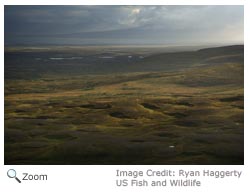 The tundra is one of the harshest biomes and it is definitely the coldest! Temperatures in the tundra can reach as low as minus 25 degrees Fahrenheit! Beneath the tundra is permafrost. Permafrost is a permanently frozen sublayer of soil. There is very little rain or snow in the tundra, usually less than 15 inches a year. The tundra is one of the harshest biomes and it is definitely the coldest! Temperatures in the tundra can reach as low as minus 25 degrees Fahrenheit! Beneath the tundra is permafrost. Permafrost is a permanently frozen sublayer of soil. There is very little rain or snow in the tundra, usually less than 15 inches a year.
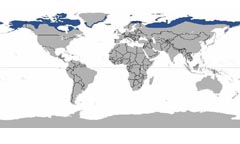 There are two types of tundra, the arctic and the alpine tundra. The arctic tundra is the land around the North Pole. The alpine tundra can be found above the tree line of tall, cold mountains. Tundra covers one fifth of the Earth's surface. Tundra comes from the Finnish word tunturia and means barren or treeless land. There are two types of tundra, the arctic and the alpine tundra. The arctic tundra is the land around the North Pole. The alpine tundra can be found above the tree line of tall, cold mountains. Tundra covers one fifth of the Earth's surface. Tundra comes from the Finnish word tunturia and means barren or treeless land.
Defrosting the Tundra
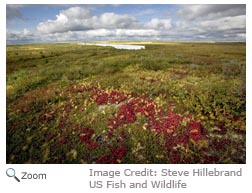 The growing season in the tundra is very short, usually only 6 to 10 weeks. In the summer, the top layer of soil may thaw out. When the ice melts, it can't drain into the soil because of the permafrost, so water collects in bogs and ponds. This makes up for the low rain and snowfall! As the top layer of soil thaws out, plants and microorganisms have a chance to grow. The sun is then out for most of the the day and night, so the plants have extra sunlight and can grow faster. The growing season in the tundra is very short, usually only 6 to 10 weeks. In the summer, the top layer of soil may thaw out. When the ice melts, it can't drain into the soil because of the permafrost, so water collects in bogs and ponds. This makes up for the low rain and snowfall! As the top layer of soil thaws out, plants and microorganisms have a chance to grow. The sun is then out for most of the the day and night, so the plants have extra sunlight and can grow faster.
|
|
Plants in the Tundra
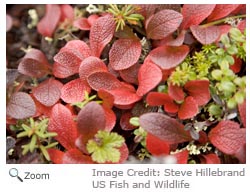 There are thousands of species of plants in the Arctic tundra. The plants tend to be small and close to the ground. This protects them from strong winds and cold temperatures. Some plants that grow in the tundra include short shrubs, sedges, grasses, flowers, birch trees and willow trees. Cushion plants, which, also grow in the tundra, are types of plants that grow low to the ground in tight places. They are called cushion plants because they are soft and cushiony. Lichen also is found in the tundra. There are thousands of species of plants in the Arctic tundra. The plants tend to be small and close to the ground. This protects them from strong winds and cold temperatures. Some plants that grow in the tundra include short shrubs, sedges, grasses, flowers, birch trees and willow trees. Cushion plants, which, also grow in the tundra, are types of plants that grow low to the ground in tight places. They are called cushion plants because they are soft and cushiony. Lichen also is found in the tundra.
Living in the Tundra
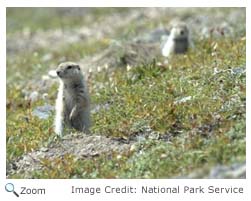 Animals that live on the tundra must be able to adapt to very cold temperatures. They must also be able to raise their young during the very short summer months. Animals that live on the tundra must be able to adapt to very cold temperatures. They must also be able to raise their young during the very short summer months.
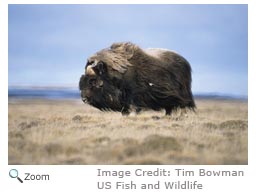 Animals
found in the tundra include the musk ox, the Arctic hare, the polar bear, the Arctic fox, the caribou and the snowy owl. Many animals that live in the tundra, like the caribou and the semipalmated plover, migrate to warmer climates during the winter. Others, like the arctic ground squirrel, hibernate during the winter months. There are very few reptiles and amphibians found in the tundra because the temperatures are so cold. Animals
found in the tundra include the musk ox, the Arctic hare, the polar bear, the Arctic fox, the caribou and the snowy owl. Many animals that live in the tundra, like the caribou and the semipalmated plover, migrate to warmer climates during the winter. Others, like the arctic ground squirrel, hibernate during the winter months. There are very few reptiles and amphibians found in the tundra because the temperatures are so cold.
|